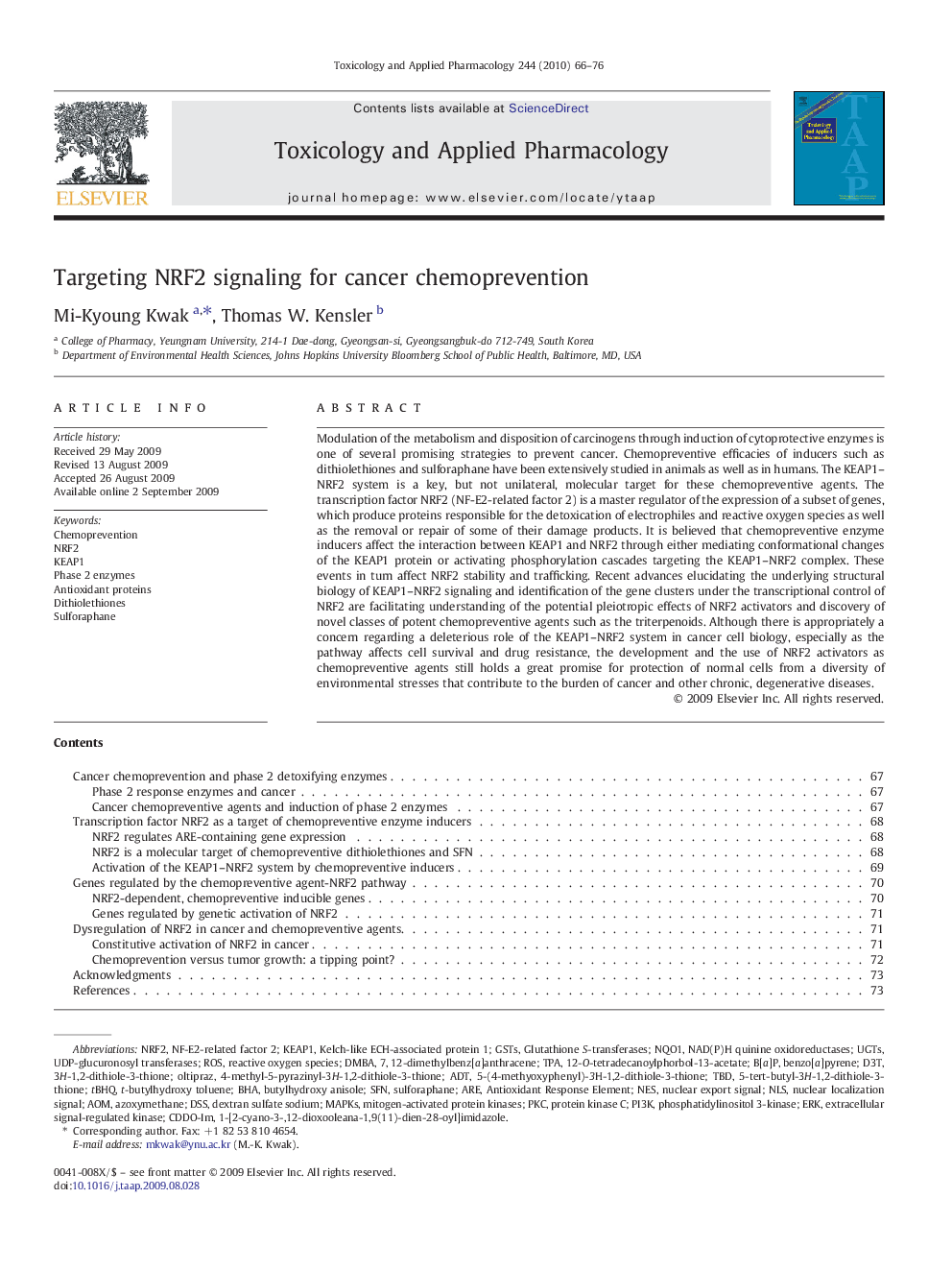| Article ID | Journal | Published Year | Pages | File Type |
|---|---|---|---|---|
| 2570458 | Toxicology and Applied Pharmacology | 2010 | 11 Pages |
Modulation of the metabolism and disposition of carcinogens through induction of cytoprotective enzymes is one of several promising strategies to prevent cancer. Chemopreventive efficacies of inducers such as dithiolethiones and sulforaphane have been extensively studied in animals as well as in humans. The KEAP1–NRF2 system is a key, but not unilateral, molecular target for these chemopreventive agents. The transcription factor NRF2 (NF-E2-related factor 2) is a master regulator of the expression of a subset of genes, which produce proteins responsible for the detoxication of electrophiles and reactive oxygen species as well as the removal or repair of some of their damage products. It is believed that chemopreventive enzyme inducers affect the interaction between KEAP1 and NRF2 through either mediating conformational changes of the KEAP1 protein or activating phosphorylation cascades targeting the KEAP1–NRF2 complex. These events in turn affect NRF2 stability and trafficking. Recent advances elucidating the underlying structural biology of KEAP1–NRF2 signaling and identification of the gene clusters under the transcriptional control of NRF2 are facilitating understanding of the potential pleiotropic effects of NRF2 activators and discovery of novel classes of potent chemopreventive agents such as the triterpenoids. Although there is appropriately a concern regarding a deleterious role of the KEAP1–NRF2 system in cancer cell biology, especially as the pathway affects cell survival and drug resistance, the development and the use of NRF2 activators as chemopreventive agents still holds a great promise for protection of normal cells from a diversity of environmental stresses that contribute to the burden of cancer and other chronic, degenerative diseases.
